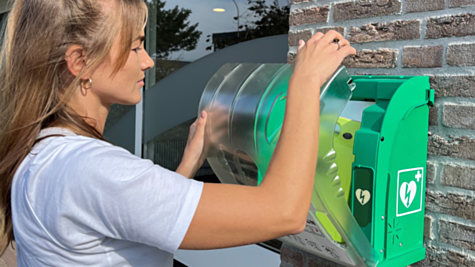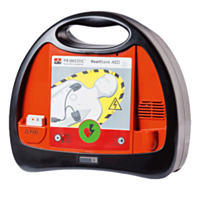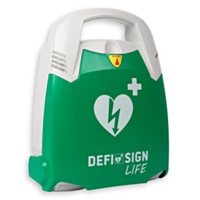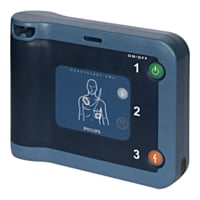Ready, steady, CPR: awareness in your neighbourhood

In any community, the ability to respond effectively and quickly to emergencies, such as cardiac arrest, can mean the difference between life and death. Cardio Pulmonary Restitution, also known as CPR, is an important skill that can save lives. Especially in the crucial minutes before professional emergency services arrive.
In this blog, we highlight the importance of CPR awareness in neighbourhoods. This life-saving technique can have a huge impact on your neighbourhood!
Cardiac arrest can happen to anyone at any time, on the street or at home. Starting CPR as soon as possible until professional help arrives at the scene can significantly increase the chances of survival for the casualty. Learning CPR is not only useful for healthcare professionals, but can also be of great importance for the general public. This life-saving skill can be learned and applied by almost anyone. It makes your community much more powerful in unexpected emergencies. So ask yourself: who can perform CPR in my neighbourhood? And where is the nearest AED? Or even better: can I learn CPR myself so that I can respond quickly and properly if someone nearby suffers a cardiac arrest?
Benefits of awareness of CPR in neighbourhoods
Having residents in a neighbourhood trained in CPR can significantly reduce response time and increase the chances of a positive outcome for a person suffering a cardiac arrest.
Besides saving lives, this shared goal also creates a stronger sense of unity between neighbours. Especially if you attend CPR training together.
Here are some tips on how to increase awareness and accessibility of CPR and AEDs in neighbourhoods:
1. Making training accessible
By organising accessible CPR courses at local level, you can ensure that more people in the neighbourhood master the life-saving skill. Make sure these course are suitable for all age groups, from schoolchildren to the elderly. Engage a professional organisation certified to run CPR courses and organise it, for example, in a community centre or schools.
2. Encourage the placement of AEDs
It is crucial that rescuers can deploy an Automatic External Defibrillator (AED) in the event of a (possible) cardiac arrest within 6 minutes. If you start CPR within these 6 minutes and there is a cardiac arrhythmia that can be defibrillated with an AED, the victim's chance of survival increases significantly, by up to 70%. Strategically placing AEDs in neighbourhoods, along with informing residents about their location and use, further improves the community's ability to respond effectively to emergencies.
Therefore, check whether there is an AED nearby, within the 6-minute zone in your neighbourhood. If not, it is advisable to purchase an AED. Collect money together or check the possibilities for subsidies in your municipality. On our page "AEDs for the neighbourhood" you can see which models we recommend.


